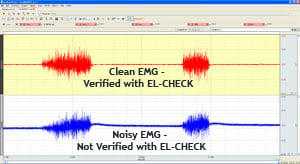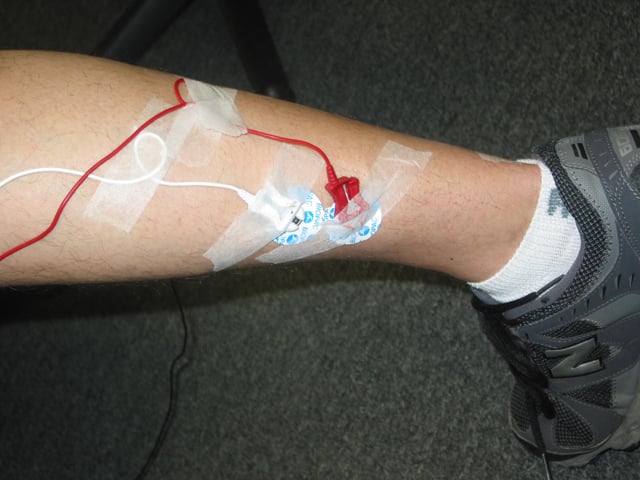Recording good data
When using electrodes:
- Prepare the electrode site by removing dead skin—unless recording EDA/GSR—using an ELPAD and cotton swabs with water.
- If recording EDA/GSR, see EDA (GSR) subject preparation for guidelines.
- Apply a drop of gel to the electrode (but not so much as to spread and prevent it from sticking well); apply to pre-gelled disposable electrodes if they look dry or do not provide a strong signal.
- Wait at least 5 minutes before starting the recording so that the gel can be absorbed into the skin; this will reduce the impedance.
- Check the impedance level—use the “Electrode Check” built-in impedance checker on MP3X units, or add BIOPAC’s EL-CHECK to your recording protocol to measure the impedance between surface electrodes attached to a subject before you begin recording…then correct any noise issues before you begin to record great data!

EL-CHECK is suitable for measuring electrode contact impedance for all surface biopotential measurements, including those for ECG, EEG, EGG, EMG, EOG, Bioimpedance and Impedance Cardiography. The EL-CHECK permits simultaneous connection of up to three electrode leads, for quick impedance checking between any two electrodes.
As a rule of thumb, impedance levels below 10 kOhms are ideal, and the lower the better.
- To prevent movement artifacts, use tape to attach the electrode leads to the skin. Unless recording fMRI/MRI, make a loop with the electrode lead cable under the tape to reduce the chance of dislodging the electrode due to a sudden pull.

General advice:
- Each amplifier has several gain settings. Use the highest gain setting possible which does not cause data to clip (data will clip when the signal is amplified so much that it goes beyond the -10 to +10 volt range of the system). High gain takes full advantage of the high resolution capability of the system and increases measurement sensitivity.
- When calibrating a transducer, whenever possible use calibration values that encompass the range in which you will be recording. For example, if you are using a force transducer and anticipate working in the range 5 to 50 grams, use a 5 gram and a 50 gram weight for calibrating.
- For airflow transducers, use flow rates that are similar to those you intend to record.
Associated Applications
WHAT'S NEW
Biology research covers a wide variety of studies all aiming to understand living organisms...
Stay Connected